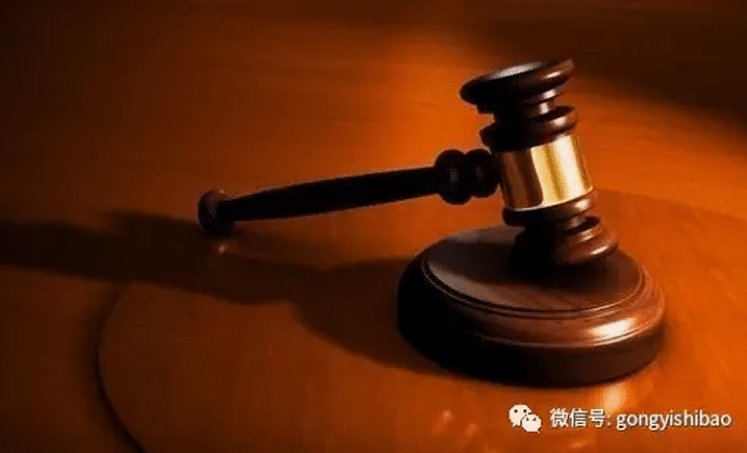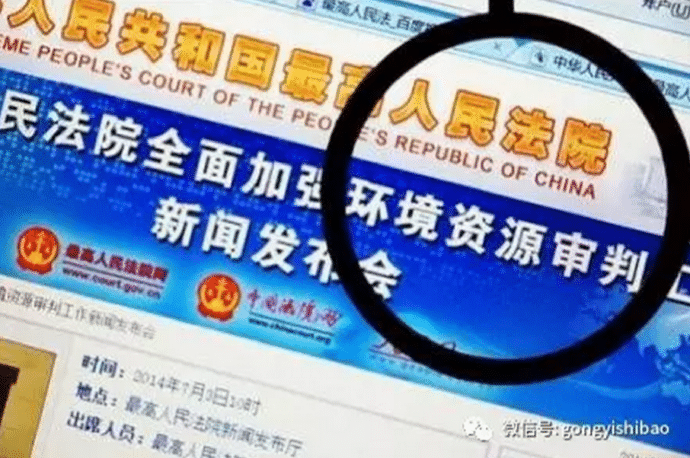Editor’s Note:
this is an abridged translation of an article that originally appeared in the Charity Times (公益时报).

On the eve of the year of the rooster, two Chinese environmental NGOs ran into trouble after initiating an environmental public interest lawsuit.
On January 25th, the Jiangsu Intermediate People’s Court in Changzhou City announced its decision on the first instance on an environmental public interest case, referred to by the media as the “Changzhou poisonous land case”. The case had been initiated by two NGOs, the Friends of Nature Environmental Institute from Chaoyang District, Beijing (known as “Friends of Nature”) and the China Biodiversity Protection and Green Development Foundation (known as the “Green Development Foundation”). It ruled that the plaintiffs, the two NGOs, lost the case and have to bear legal expenses of 1.89 million Yuan.
Where will this ruling, with this “sky-high” price tag, lead environmental public interest litigation?

“Sky-high” litigation expenses to deter excessive suits?
After the new “Environmental Protection Law” was implemented on January 1st 2015, environmental public interest cases started to appear in courts all over China. Allowing qualified NGOs to initiate public interest litigation became one of the bright spots of the new law. At the time, experts estimated that there were more than 700 NGOs across China that met the requirements for initiating environmental public interest lawsuits. Therefore, whether or not the large number of qualified NGOs would lead to a surge in such cases became an issue of great public concern.
After the two NGOs were ordered to pay “sky-high” legal expenses amounting to 1.89 million Yuan some believed this would set a precedent preventing a future surge in environmental public interest litigations, and that NGOs who initiate lawsuits need to have a sound reason and enough evidence to do so.
In response Xiao Jianguo, a professor at the Renmin University Institute of Legal Studies, stated that there is no basis for using high legal expenses to prevent a surge in litigations. He believes that the current barriers to environmental interest litigation are anything but low.
“When talking about lawsuits with a malicious intent, raising barriers is a suitable way to prevent the spread of such cases. However, environmental public interest litigation is not the same as private interest litigation. Barriers to private interest litigation are relatively low compared to public interest litigation and regulations on the requirements for public interest lawsuits are much stricter than for private interest litigations. There is a need to produce evidence that the public interest has already been harmed or that there is great risk of the public interest being harmed. This requirement to produce evidence already keeps a relatively large portion of inappropriate public interest lawsuits out of the courts,” says Xiao Jianguo.
“There is no need to use high legal expenses to control potential public interest litigants, since there are already relatively high barriers which filter out some of the cases. Currently, the costs of environmental public interest litigation, such as fees to have a case heard and legal expenses, follow the principle of protecting the rights of the plaintiff. To the greatest extent possible, this encourages plaintiffs to initiate public interest litigations and help build a beautiful China. The ruling on high legal expenses is anything but appropriate,” adds the professor.

Quoting an obsolete “Legal Document”
Experts have expressed their doubts regarding the regulations cited by the Jiangsu Intermediate Court as the basis for the penalty issued in the first instance ruling.
According to the text of the ruling, the eighth clause of the “Opinions of the Ministry of Environmental Protection on Strengthening Work to Prevent Soil Pollution” (Ministry of Environmental Protection Document No. 48, 2008) stipulates that “the relevant people’s government will be legally responsible for restoring and managing the soil and ground water of polluted land if the polluting unit no longer exists or if, for historical or other reasons, the polluting unit or individual cannot be determined; if the unit has legally given up usage rights to the land then the person who has obtained the usage rights to the land will be responsible for restoration and management. If the parties involved have a separate agreement, that agreement will be followed; however, the parties involved cannot be absolved of their responsibility to prevent pollution.”
The environmental emergency response and restoration measures taken by the Changzhou municipal government meet the requirements of the regulation described above, as well as the regulations in the State Council “Action Plan on Preventing Soil Pollution”. While the Changzhou Municipal government is implementing measures on environmental restoration, the three defendants have no way of replacing the government in carrying out environmental restoration activities.
In response, the relevant experts stated that the “Ministry of Environmental Protection Document No. 48, 2008” is a normative document which has long been annulled on the orders of the Ministry of Environmental Protection. It is inappropriate to still use it as a basis for the sentence in this case.

The plea’s “public interest” character is recognized
According to the Jiangsu Provincial Intermediate People’s Court’s first instance verdict, the first focus of the controversy between plaintiff and defendant was whether the litigation subject matter constituted public interest.
The Court believes that it does.
The “Chang Long (Huada, Chang Yu) Company Original Site Survey and Technical Report” and the “Chang Long (Huada, Chang Yu) Company Original Site Health Risk Assessment”, filed by the Changzhou City Environmental Protection Research Institute and commissioned by the Changzhou New North District Government, showed that the piece of land in question faced serious soil and groundwater pollution and unacceptable environmental risks, and remediation measures had to be put in place. The evidence was sufficient to prove that long-term chemical production and operation had caused soil and groundwater pollution to the piece of land. Because there is a high degree of correlation between soil and groundwater, and there also exists a certain degree of fluidity with groundwater, the chemical production of pollutants on the land not only harmed the interests of land use rights, but also carried the risk of harming public interest, hence the prosecution of the two plaintiffs constituted public welfare.
The first instance court ruling that the litigation constituted public interest was met with approval by legal experts. Director Wang Canfa of the China University of Political Science and Law Center for Victims of Pollution claims that the case supports the public interest status of the suit and confirms that the plaintiff sued in the public interest, something worthy of approval.
“The court has affirmed the facts with regards to pollution, that the place is indeed polluted and there is a further risk of pollution, which provides a good premise for the establishment of a public interest litigation”, says Wang Canfa.
However, some experts have differing points of view. Shanghai Jiaotong University School of Law Professor Wang Xi says that there will be substantial negative implications due to the failure of the lawsuit. After the local government has taken on the ‘poisoned land’ according to the law, it appears inappropriate for social organizations to treat enterprises that have operated on the ‘poisoned land’ in the past as defendants.
Wang Xi believes that an administrative public interest litigation (initiated by the government) is a better course of action that would allow environmental social organizations to play their role, with smaller risks involved.
“The intention of the case is to eliminate pollution on the ‘poisoned land’. When the local government has ownership of the ‘poisoned land’, what the plaintiff should do is monitor the local government’s pollution control work to ensure its adequacy. Furthermore, logically speaking, the local government has the right to require all enterprises who have previously operated on the land to bear the responsibility of the pollution control work, and in a case where the polluter cannot be found, or the pollution is serious and causes an emergency, the local government can step in to directly manage. At the same time, however, the local government reserves the right of recourse to all original polluters for treatment costs and other related responsibilities.” Wang Xi says “this case shows that social organizations should pay greater attention to promoting the establishment of a system for environmental administrative public interest litigations.

The high cost of public interest litigations
According to a reporter from the “Public Welfare Times”, the financial cost of an environmental public interest litigation is much higher than an ordinary litigation, and the ‘case acceptance fee’ is only part of this cost.
The costs comprise litigation costs and attorneys’ fees. The former include, besides the ‘case acceptance fee’, the application fee and the transportation costs, accommodation, living expenses, work-related subsidies and other costs incurred by the witness, the appraiser, the translator and the operator to appear at court on the date specified by the people’s court.
However, in an environmental public interest litigation, the greatest court dispute between the two parties often concerns the appraisal of the pollution, which could cost as little as several hundred thousand dollars and as much as millions or even tens of millions of dollars. In the Yunnan chromium slag pollution incident of 2011, the 7 million yuan ecological environmental damage assessment fees charged by the appraisal agency forced “Friends of Nature” to stop the litigation.
The cost of the attorneys’ fees for environmental public interest litigations is also much higher than for traditional litigations. Although the attorneys’ fees are negotiated by the client and the solicitor on the basis of voluntary compensation, the final amount depends on the time spent on representation, the complexity of the legal issues themselves, and other costs associated with the handling of the case.
When it comes to the amount of time spent by law firms, environmental public interest litigation consumes far more time than traditional litigations, as a result of the complexity and professional nature of the litigations.
With regards to the costs of environmental public interest litigation cases, the Supreme People’s Court issued an opinion in the “View on the Comprehensive Strengthening of Environmental Resources Trial Work to Provide Strong Judicial Guarantees for the Construction of an Ecological Civilization” as early as the 23rd of June 2014.
The document is clear in its goal of legally determining the environmental civil public interest litigations and the compensation range, and in exploring the relationship between the compensation range for environmental public interest litigations and for private interest litigations. Plaintiffs in environmental public interest litigation cases requesting the defendant to compensate for costs incurred in damage prevention or in the restoration of the environment, losses resulting from the destruction of natural resources and ecological environments as well as reasonable attorneys’ fees, investigation fees, appraisal fees and other litigation expenses can be supported according to trial details. At the same time, the document also aims to explore the establishment of a dedicated fund for environmental public interest litigation, and earmark environmental compensation funds for environmental restoration, ecological repair work, and the defence of environmental public interest.



